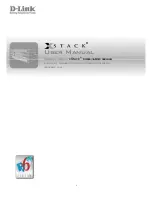
36
Precautions for Measurement
Relay operation time and stability time
The relay open/close operation waits for a contact operation time (settling time). The settling time is
as follows.
Channel switching time
Relay open settling time
Relay close settling time
Settling time
Relay open
Relay close
Channel switching
5 ms
5 ms
11 ms
The relay contact operation is completed within the settling time, however, it may take some time
for the relay to be stabilized depending on the instrument to be used or measuring object. Set the
channel delay time or perform measurement after a sufficient delay time on the instrument.
Preventing relay contact welding
The relay contact may weld when relay switching is repeated with a large current flowing (also
when the measuring object or instrument to be connected is capacitive). When relay contact
welding occurs, the measuring object may be shorted. Periodic inspection is recommended.
Reference: "Checking for relay contact welding" (p. 26)
Influence of thermoelectric power
Be aware of the thermoelectric power when a voltage accuracy of a few µV is required.
Install the device and instrument in a constant temperature environment and fully adjust them to the
ambient temperature before use.
Especially prevent uneven temperatures at the terminal.
When creating a measurement cable, use a connector and terminal of a material with low
thermoelectric voltage, such as brass (nickel plate), pure copper (+ gold plate), etc.
Exercise care to keep the contact surface clean.
High resistance and minute current measurement
In a high humidity environment, high resistance or minute current measurement may be affected by
leak current.
Do not touch the module board with your bare hand. Grease can cause leak current, which may
affect high resistance and minute current measurement.
Do not bundle the measurement cables when measuring minute current. Doing so may cause leak
current due to the capacity of the cables, resulting in an error in the measured value.
Caution regarding noise
Do not bundle the measurement cables or connection cables for the instrument and the power line.
Noise on the power line may cause malfunction of channel switching or an error in the measured
value.
When the measured value cannot be stabilized due to noise, connecting the ground (
GND
terminal)
of the device and the ground of the instrument may improve the condition.
Caution regarding load
When a load is applied to the measurement cable, the contact area of the connector becomes
unstable and the contact resistance is increased, which can cause the measured value to be
unstable.
When attaching the module to the main frame, be sure to secure the panel using screws. If the
panel cannot support the load when a vertical load is applied to the main frame, the module board
is stressed and may malfunction.
HIOKI SW1001A961-04
Summary of Contents for SW9001
Page 2: ...HIOKI SW1001A961 04...
Page 42: ...38 Channel Delay Function HIOKI SW1001A961 04...
Page 48: ...44 Scan Measurement Example HIOKI SW1001A961 04...
Page 50: ...46 Checking the Device Status HIOKI SW1001A961 04...
Page 52: ...48 Initialization Settings HIOKI SW1001A961 04...
Page 118: ...114 Sample Programs 3 Select FILE Save All HIOKI SW1001A961 04...
Page 160: ...156 Outline Drawings 12 4 Outline Drawings SW1001 Unit mm Tolerance 0 2 HIOKI SW1001A961 04...
Page 161: ...157 Outline Drawings SW1002 Unit mm Tolerance 0 2 12 Appendix HIOKI SW1001A961 04...
Page 162: ...158 Outline Drawings HIOKI SW1001A961 04...
Page 164: ...160 HIOKI SW1001A961 04...
Page 167: ...HIOKI SW1001A961 04...
Page 168: ...HIOKI SW1001A961 04...
Page 169: ...HIOKI SW1001A961 04...
















































